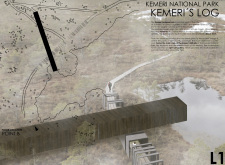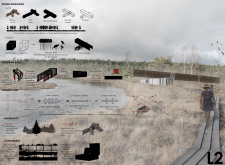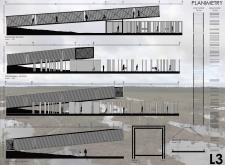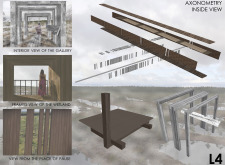5 key facts about this project
The design in Kemeri National Park is situated west of Jurmala, Latvia, in an area known for its vast low-altitude forests, wetlands, and diverse wildlife, including the protected Black Stork. Established in 1997, the park covers 381.65 km² and aims to foster a connection between visitors and the natural environment. The layout encourages exploration, inviting visitors to engage actively with their surroundings while appreciating the ecological significance of this unique landscape.
Design Concept
At the heart of the project is Bridge B, which acts as a key focal point where several pathways meet. This configuration frames the views of the wetlands to the south, allowing visitors to more fully appreciate the landscape. The bridge serves as a welcoming entrance, guiding individuals into the park while emphasizing the importance of the natural scenery.
An observation tower enhances the experience further by incorporating an open-pit gallery. This element promotes not just viewing but also learning about the local ecosystem. The design therefore aims to provide educational opportunities while prioritizing visitor interaction with nature.
Architectural Strategies
The geometry of the structure emphasizes simplicity, aligning with the natural contours of the land. This layout supports a more intuitive navigation of the park. The design showcases features that mimic natural forms, creating harmony between the built environment and the trees that surround it. This relationship allows for a meaningful connection between the architecture and the landscape.
The main pedestrian walkway functions as a gallery, leading visitors through framed views of the wetlands and forests. Along the path, seating areas and information panels encourage people to stop and engage with what they see. These details enhance the overall experience, making it easy to absorb the beauty of the setting.
Materials and Integration
In terms of materials, Nativa wood has been selected for its local availability and sustainability. This choice reinforces the focus on ecological considerations while helping to blend the structures with their natural context.
The observation platform offers a direct connection to the wetlands, providing a space for reflection and tranquility. This accessible design feature allows visitors to appreciate the environment and engages them in a more intimate way with the park.






















































